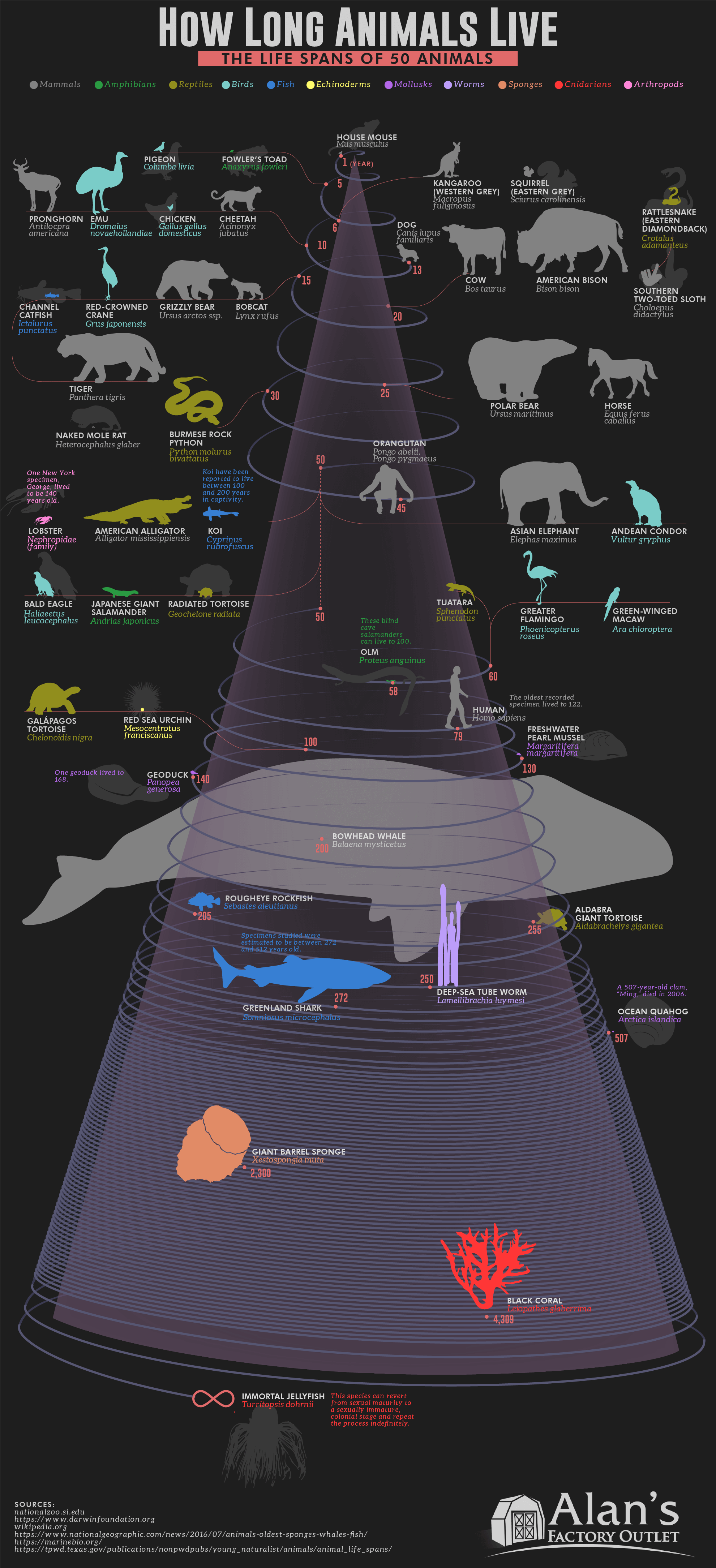Taps Coogan – March 5th, 2022
Enjoy The Sounding Line? Click here to subscribe for free.
Enjoy The Sounding Line? Click here to subscribe for free.
The following infographic and article is reposted from Visual Capitalist.

For most of history, average life expectancy at birth for humans has stood around 30 years. But thanks to recent breakthroughs in technology and modern medicine, humans are now born with an average life expectancy closer to 80 years.
Some might argue this is one of mankind’s greatest achievements. With this rise in life expectancy, how do human lifespans now rank compared to other animals?
This graphic from Alan’s Factory Outlet covers the life expectancy of 50 different animals ranging from amphibians to arthropods, and even includes one species that’s immortal (well, in theory).
Let’s take a closer look at lifespans in the animal kingdom.
The Longest Living Things
Here are some of the longest living animals, where even with advancements in modern medicine, humans are likely far off from matching.
The Deep-Sea Tube Worm
The deep-sea tube worm, also known as Riftia pachyptila, lives until about 250 years old, though in some cases this can stretch much further.
Amazingly, they have no digestive system, mouth, or anus, and thus do not consume food to survive in a traditional sense. Instead, the bacteria living inside their bodies helps to transform the sulfur from nearby hydrothermal vents into energy.
This makes the deep-sea tube worm one of the few animals on Earth that does not derive its nutrients (either directly or indirectly) from sunlight.
The Immortal Jellyfish
The immortal jellyfish, otherwise known as Turritopsis dohrnii, is biologically immortal.
How is this possible?
Essentially, these creatures revert and transition backwards from sexual maturity towards sexual immaturity in a process called transdifferentiation—where adult cells are converted into other types of tissue. Not surprisingly, processes like these are getting plenty of human attention in gene therapy and scientific research.
Giant Barrel Sponge
The giant barrel sponge can live for 2,300 years. These cool creatures live on the reef surface of the ocean, and are bowl shaped, which provides habitat for many other invertebrates including crabs, shrimps, as well as fish. In addition, sponges have no tissue and each of their individual cells can do the same job of any other cell.
Some experiments have even shown sponges reform and have their cells swim back together when blended up in a blender. If they didn’t, that would be a very cruel experiment.
Human Lifespans: A Rising Trend To Watch
The number of centenarians—those 100 or more years old—stands at 570,000 today.
Here are the countries where they are most common compared to their respective populations.
| Country/Region | % Of Population |
|---|---|
| Japan | 0.062% |
| Uruguay | 0.061% |
| Hong Kong | 0.047% |
| Puerto Rico | 0.045% |
| France | 0.030% |
| Spain | 0.028% |
| Italy | 0.028% |
| Cuba | 0.027% |
While figures in the one-hundredth of a percent range may sound underwhelming, this is still a 1,500% jump from the 33,000 centenarians that lived in the 1950s.
Slowly but surely, as human life expectancy continues to grow, our species seems destined to climb up the age ladder—and who knows, we may even be able to eventually live beyond some of the other creatures on this list.
Would you like to be notified when we publish a new article on The Sounding Line? Click here to subscribe for free.
Would you like to be notified when we publish a new article on The Sounding Line? Click here to subscribe for free.

